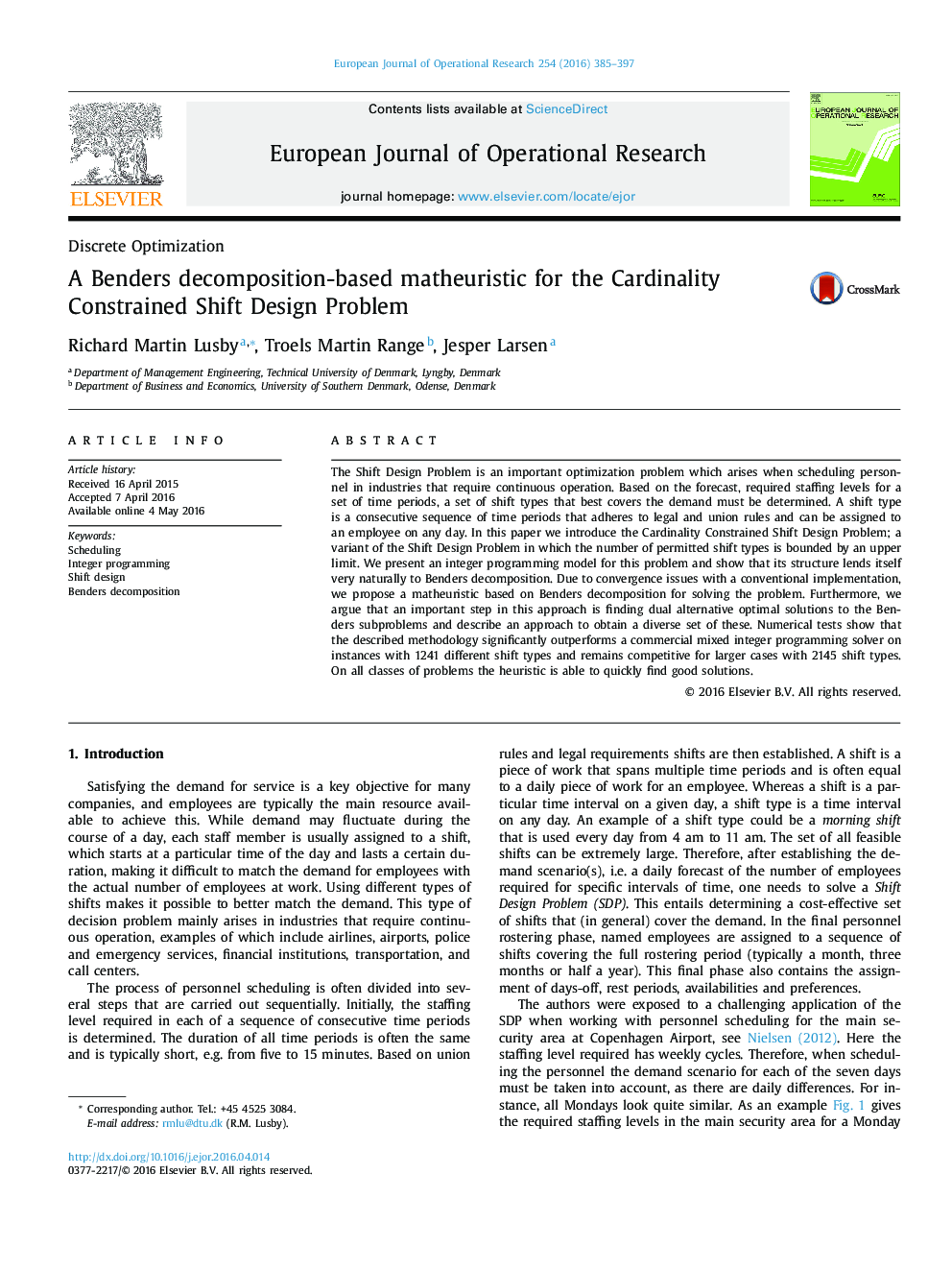| Article ID | Journal | Published Year | Pages | File Type |
|---|---|---|---|---|
| 6895412 | European Journal of Operational Research | 2016 | 13 Pages |
Abstract
The Shift Design Problem is an important optimization problem which arises when scheduling personnel in industries that require continuous operation. Based on the forecast, required staffing levels for a set of time periods, a set of shift types that best covers the demand must be determined. A shift type is a consecutive sequence of time periods that adheres to legal and union rules and can be assigned to an employee on any day. In this paper we introduce the Cardinality Constrained Shift Design Problem; a variant of the Shift Design Problem in which the number of permitted shift types is bounded by an upper limit. We present an integer programming model for this problem and show that its structure lends itself very naturally to Benders decomposition. Due to convergence issues with a conventional implementation, we propose a matheuristic based on Benders decomposition for solving the problem. Furthermore, we argue that an important step in this approach is finding dual alternative optimal solutions to the Benders subproblems and describe an approach to obtain a diverse set of these. Numerical tests show that the described methodology significantly outperforms a commercial mixed integer programming solver on instances with 1241 different shift types and remains competitive for larger cases with 2145 shift types. On all classes of problems the heuristic is able to quickly find good solutions.
Related Topics
Physical Sciences and Engineering
Computer Science
Computer Science (General)
Authors
Richard Martin Lusby, Troels Martin Range, Jesper Larsen,
